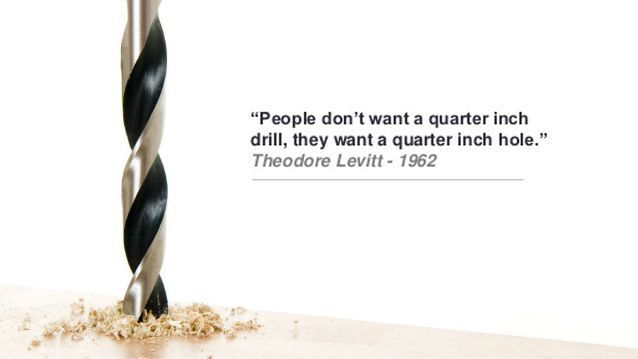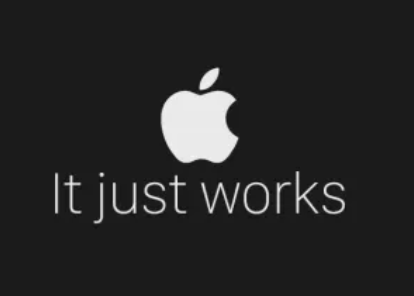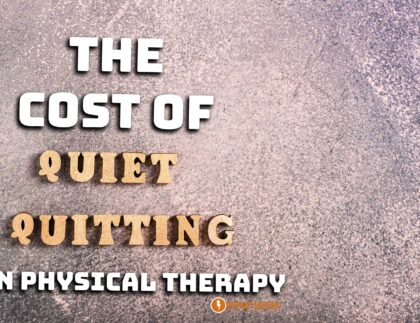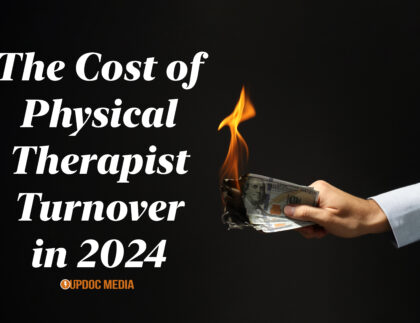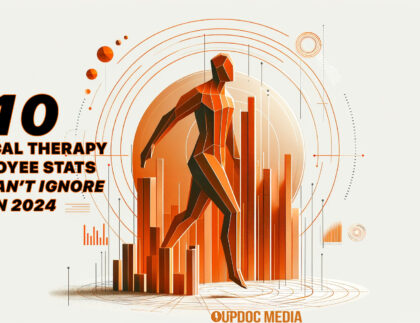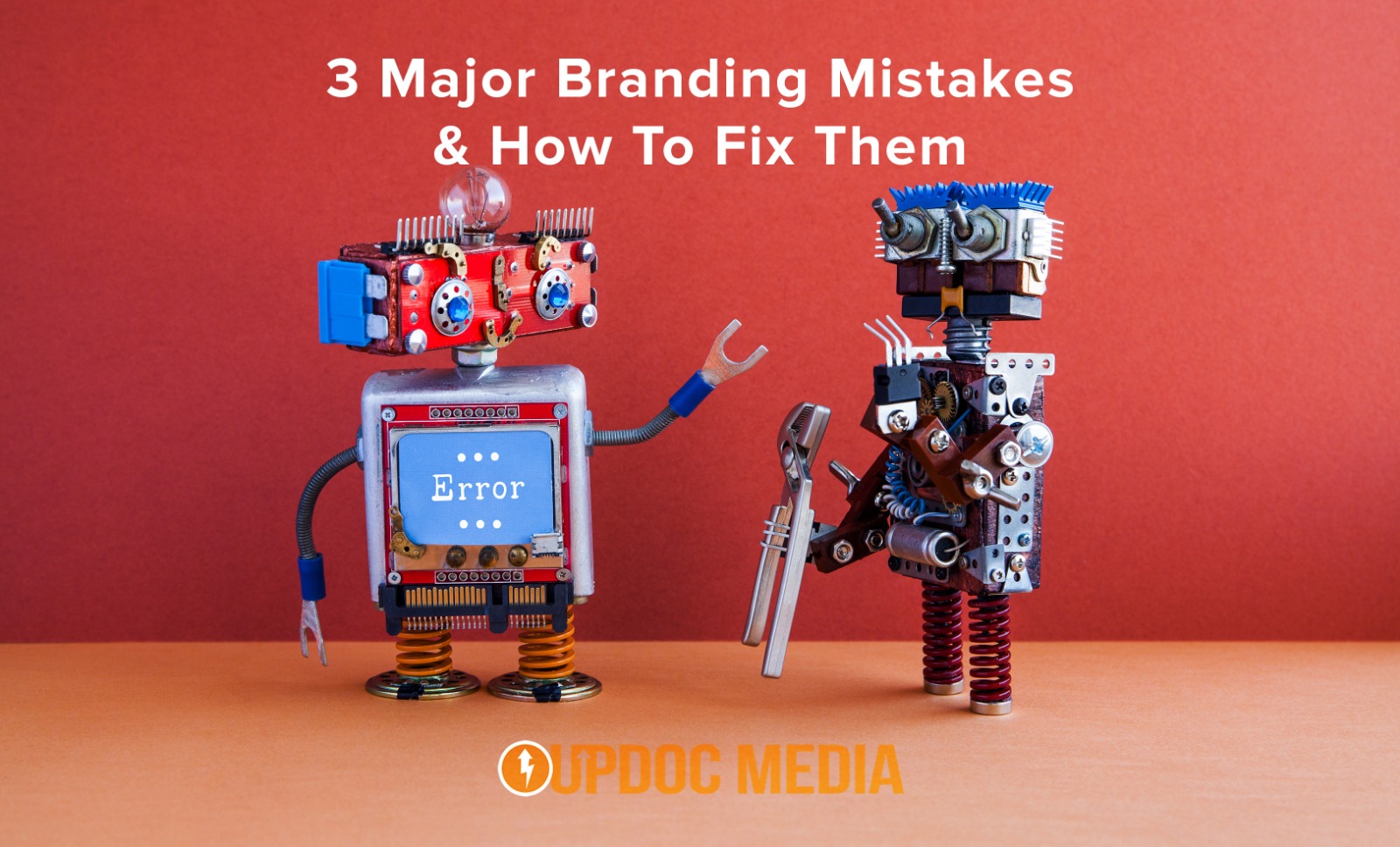
Branding is one of those topics that I just love. It also, in part, got me on the map in many regards as it pertained to branding professions and organizations. If you’re interested in taking a walk down memory lane… you can check out that list — BELOW. Otherwise, without further ado… let’s talk about 3 Major Branding Mistakes and How To Fix Them!
PS. For the TLDR edition to those of you wondering if we’ll address the brand of Physical Therapy… we do. Go to closing thoughts 😉
I must have heard it at least a dozen times at CSM — Physical Therapy has a branding problem. I heard it another half dozen times… “our practice has no brand!” Branding is many times something done wrong, but for the right reasons. Other times, it’s done wrong, and for the wrong reasons. Yet other times, done right, for the wrong reasons. So rarely is branding done in an intentional way that is purposefully done right.
These thought lead me back to a recent experience I had in Denver, CO at the 2020 Combined Sections Meeting national conference put on by the American Physical Therapy Association. At CSM 2020, I had the privilege of being a part of a three part TED style talk at the ACAPT/PPS evening event.
Come on out!!! Revel Social Club 🙌#APTACSM pic.twitter.com/9gMCRDMiRz
— Ben Fung (@DrBenFung) February 14, 2020
Your speakers tonight @reveldenver @APTAcsm @pps_apta @acapt2#APTACSM #DPTstudent #PTAstudent #socialPT #freedrinks pic.twitter.com/CyT8MKInUH
— Ben Fung (@DrBenFung) February 14, 2020
This particular evening, the TED’ish talk I delivered was on on leadership; and, ended the night doing roundtables on personal branding. As with many conversations at professional conferences, this moved into expanded topics of discussion for a fantastic evening that started at 8pm and ended waaaay past closing hours… I think I ended up being the last person in the club that wasn’t part of the staff there.
In any case, something I found myself sharing with each group was my definition of branding. Branding is an idea, tied to a solution — for better or worse. The best brands have made their solution (product or service) into the solution’s job… even so far to make it a noun or verb.
- Pass me a Kleenex.
- Grab me some Scotch Tape.
- Do you have a BandAide.
- I’m going to Uber there.
In short, a brand should cover three primary dimensions of the end-user’s (consumer, patient, or buyer) needs — a job to be done, a gain made, and a pain alleviated. This is where we come to the first branding mistake.
Mistake #1: Branding Individual Providers, Not The Practice/Company
We see this mistake most common with niche practices and with startup practices. What ends up happening is that the practice isn’t recognized as a pillar of the community in and of itself. The practice is really just a retail space that hosts specific providers, heralded as the best in the area. What happens here is that the branded providers are ALL the general consumers ever wants to see. While this may be initially favorable, a challenge comes soon after when the practice struggles to grow as additional practitioners brought in will have difficulty filling their schedules.
To fix this mistake, a practice should brand the COMPANY itself — not individual clinicians nor service lines. Yes… even the service lines. For the same reason that new clinical staff struggles to get busy, new service lines will struggle to grow as well unless the ENTIRE COMPANY is wrapped up into its own brand. This doesn’t mean to omit ones last name or change a company’s stated title. As an example: What this means for the fictitious Ben Physical Therapy company is that it should have a brand that consumers imagine to be a team, an experience, and a solid trustworthy result. Ben Physical Therapy fails in branding if all that comes to mind is a clinician named “Ben.”
Mistake #2: Branding Gains and Pains, Rather than the Job To Be Done
This is a common fallacy of suppliers who are proud of what their products are and what their products can do for consumers. However, many times suppliers are proud of what customers consider “nice to haves.” When a company focuses on the added benefits of their products compared to the consumer just wanting the job to be done — a brand then suffers an identity-image discongruence. While this is a subtle difference from Mistake #3 listed in the following section, the key problem here is championing aspects to a product or service that a customer might take or leave. The most classic business example is the power drill.
To correct this mistake, organizations would do well to focus their practice’s brand appearance on the JOB. So, then… what is the job of your brand? If you’re in the business of patient care, then THAT IS IT and sometimes it is that simple. Sometimes, it’s not about physical rehabilitation, or sports injury recovery, or pain management, or functional mobility, or weight loss… or any of those things. From the perspective of many consumers, those are feature sets — gain makers and pain killers. The JOB they wish to hire a clinician for is CARE.
What is the result of that care? That’s dipping into Mistake #3 — the Solution. However, to keep us on track for just a sentence or two more: For the example of primary care, many times the job is a referral or a prescription; sometimes the job is quick access to a provider; other times, care from a clinical specialist is a “sure and timely result.” Whatever the case, BRAND THE JOB. That is how you can get your brand in the mind’s eye to become like Kleenex, Band-Aide, or Uber. This leads us to….!
Mistake #3: Branding Feature Sets, Not Solution Sets
In healthcare, providers tend to promoter clinical techniques and clinician credentials. We rarely position our clinical results and patient care experience. After all, expert knowledge and skill is EXPECTED of any doctoring profession. Expertise in healthcare, at its essence, IS entry level. If these are expected, where can we go to meet consumers at what would win them over? Available research on healthcare consumers demonstrate that patients weigh character traits as of the most important considerations when choosing a provider; traits such as clear/open communication, trustworthiness, location, and congeniality as the four most desired traits for a healthcare provider.
To fix this branding problem, we need to place at the forefront what PATIENTS CARE MOST ABOUT, not what we are most proud to share of/about ourselves. It’s a fine thing to be proud of achievements; to recognize clinicians for their accolades or to position products while humble-bragging on their high level of performance. However, this cannot be done at the cost of losing focus of the job (Mistake #2) and HOW that job gets done (Mistake #3: The Solution).
The Job: You will receive quick access and feel better.
The Solution: You will feel better by “_____.”
Mistake #3 is perhaps the hardest branding trap to escape. The burden of knowledge is a common plague to service companies that are based on high level licensures — it’s called the Authenticity Paradox. Unlike the mistake of branding “nice to haves,” the error in branding features is that consumers fail to glean a clear picture as to HOW the job gets done. An example of a brand that does this beautifully:
Some Closing Thoughts
Branding, like clinical care, is as much as a science as it is an art. It deals with human emotions, behavioral psychology, and gut responses as much as it deals with measurable buying habits by the dollar, trackable digital footprints, and mappable customer conversion journeys. There are certainly ways to measure branding, which goes a bit further than the direct topic of today’s discussion. Nevertheless, it is something truly important to consider as strong brands are quite related with strong business operations.
Finally — at CSM, we talked about the brand of Physical Therapy at the TED’ish event I participated in. An idea I suggested regarding the brand of Physical Therapy went something like the following:
- We have an “internal doctor” for our primary care provider.
- We have an “eye doctor” for our vision,
- We even have a “foot doctor” and a “tooth doctor.”
- Shouldn’t it follow then that the Physical Therapist is the “physical health” doctor? It certainly pairs well in the primary care context as the idea of Physical Health mirrors the Internist.
What are your thoughts?
Memory Lane with Ben’s Branding Articles:
- Social Media/Online Marketing for Building Your Educational Brand
- Branding: The Secret to Customer Loyalty
- Best Practice ABC’s for Customer Service Branding
- Developing Your Personal Brand
- Branding for Loyalty
- A #BrandPT Challenge
- Five Ways to Start Strong with Digital Marketing
- What’s Your Brand Appearance?
- Spotlight – Ben Fung: Co-Founder of UpDoc Media
- How to Find Success as a PT and Entrepreneur: An Interview with Ben Fung
